Alternative names Pakoda, pakodi, ponako Main ingredients Chickpea batter | Course Entrée Serving temperature Hot | |
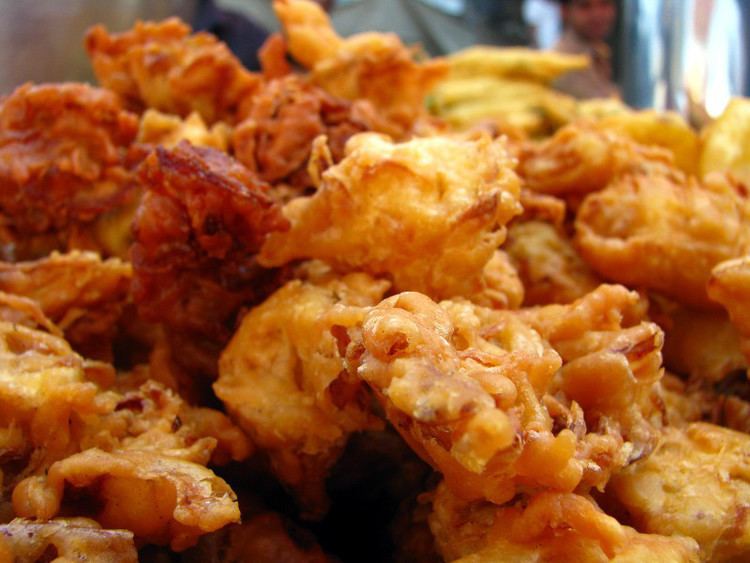 | ||
Similar | ||
Vegetable pakora recipe
Pakora ([pəkoʊɽaː]), also called pakoda, pakodi, or ponako, is a fried snack (fritter). It is found across the Indian subcontinent, especially in India, Bangladesh, Nepal and Pakistan.
Contents
- Vegetable pakora recipe
- Tasty kadhi pakora recipe
- Etymology and spelling
- Regional names
- Preparation
- Serving
- References
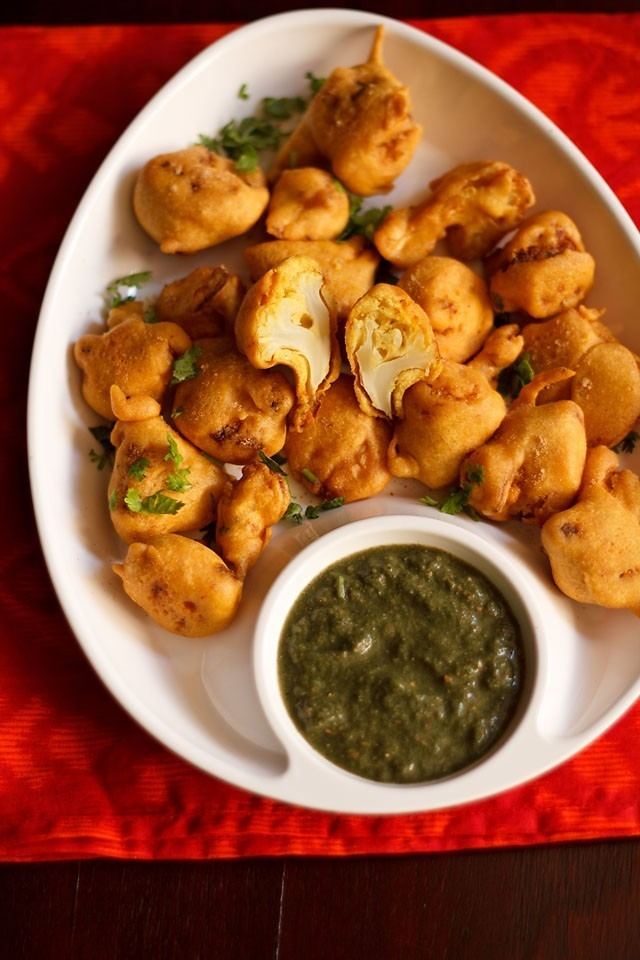
Tasty kadhi pakora recipe
Etymology and spelling
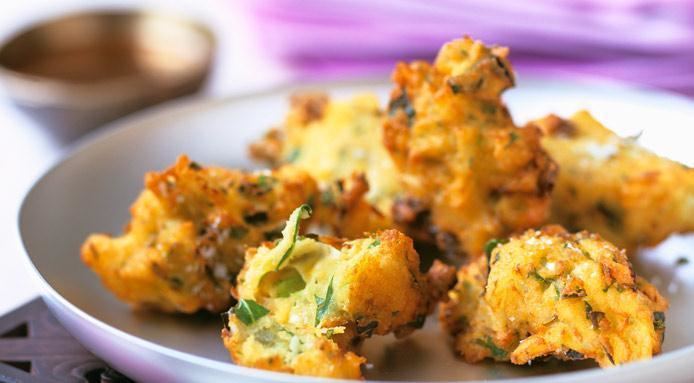
The word pakoṛā is derived from Sanskrit पक्ववट pakvavaṭa, a compound of pakva ('cooked') and vaṭa ('a small lump') or its derivative vaṭaka, 'a round cake made of pulse fried in ghee'.
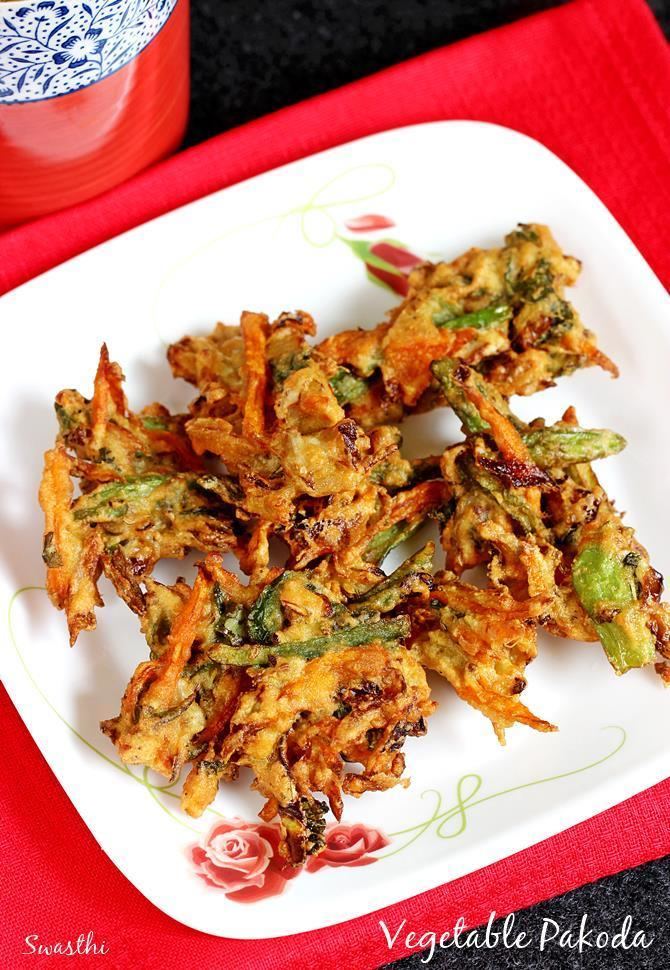
Some divergence of transliteration may be noted in the third consonant in the word. The sound is the retroflex flap [ɽ], which is written in Hindi with the Devanagari letter ड़, and in Urdu with letter ڑ.
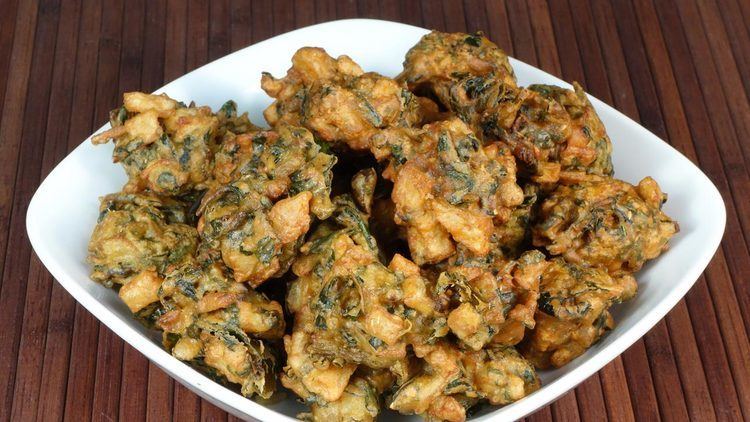
In International Alphabet of Sanskrit Transliteration, however, the Hindi letter ड़ is transliterated as <ṛ>, popular or non-standard transliterations of Hindi use
Regional names
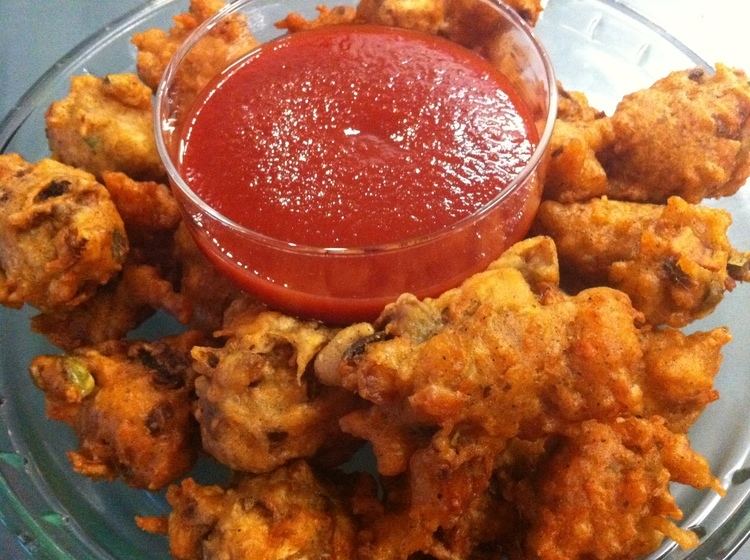
Among the Muslim Cape Malays of South Africa, pakoras are known as dhaltjies, and are usually eaten as an appetiser during iftar, or as a snack food for weddings, births, or similar occasions.
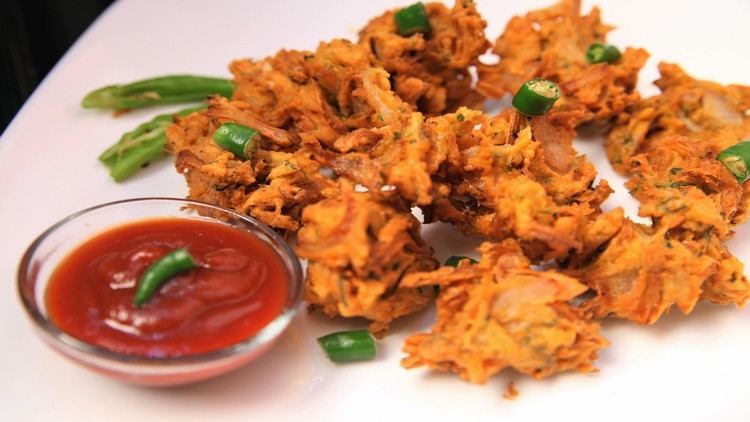
In India, particularly in Maharashtra and Karnataka, such preparations are known as bajji rather than pakora. Usually, the name of the vegetable that is deep-fried is suffixed with bajji. For instance, potato bajji is sliced potato wrapped in batter and deep-fried. In such states, pakoda is taken to mean a mix of finely chopped onions, green chillies, and spices mixed in gram flour. This is rolled into small balls or sprinkled straight in hot oil and deep-fried. These pakodas are very crisp on the outside and medium soft to crisp inside. There is also a variety that is softer overall, usually termed media pakoda in restaurants, that is made from any other ingredient, such as potatoes.
Pakoras are popular across South Asia and Great Britain (particularly in Scotland). They are sometimes served in a yogurt-based curry (salan), as a main dish, pakora curry, rather than as a separate snack. In this case, the pakoras are generally doughier and are made from chopped potato, onion, and chili mixed into the batter, instead of individual fried vegetable slices.
Pakoras are also encountered in Afghan cuisine. In China and Nepal, they are called pakoda and pakauda, respectively. In Somalia, they are known as bajiye.
Preparation
Pakoras are created by taking one or two ingredients, such as onion, eggplant, potato, spinach, plantain, paneer, cauliflower, tomato, or chili pepper. They are also occasionally prepared with bread, buckwheat, groundnut, fish, or chicken. They are dipped in a batter made from gram flour and then deep-fried. The most popular varieties include pyaaz pakora, made from onion, and aloo pakora, made from potato. Other variations include paalak pakora, made from spinach, and paneer pakora, made from paneer (soft cottage cheese). When onions, on their own, are prepared in the same way, they are known as onion bajji. A variation of pakora made from wheat flour, salt, and tiny bits of potato or onion (optional), is called noon bariya (nūn = salt) (Hindi: नूनबरिया), typically found in eastern Uttar Pradesh in India.
Serving
Pakoras are usually served as a snack or appetiser. In Great Britain, pakoras are popular as a fast food snack, available in Indian and Pakistani restaurants. They are also often served with chai to guests arriving to attend Indian wedding ceremonies, and are usually complemented with tamarind chutney, brown sauce, or ketchup.
Goli Baje is a type of pakoda, which is part of Udupi cuisine.
Pakoras have played an important role in Indian cinema history, as Raj Kapoor first scenes in cinema with Nargis as answering the door of her mother's house, with a smear of pakora batter across her forehead resulted a continuous contribution of their pairing to some of the finest and most popular films in the world.
